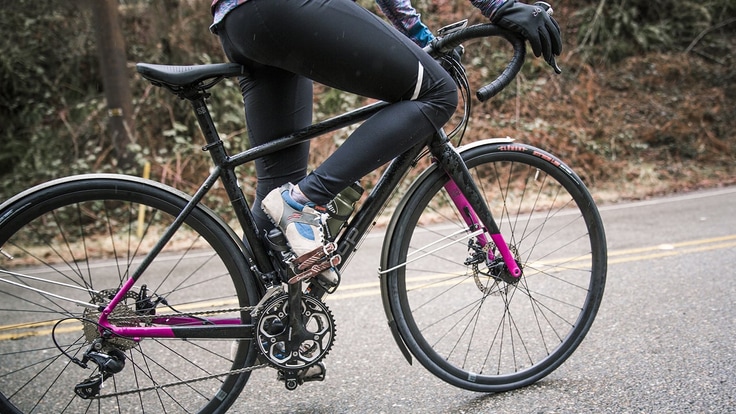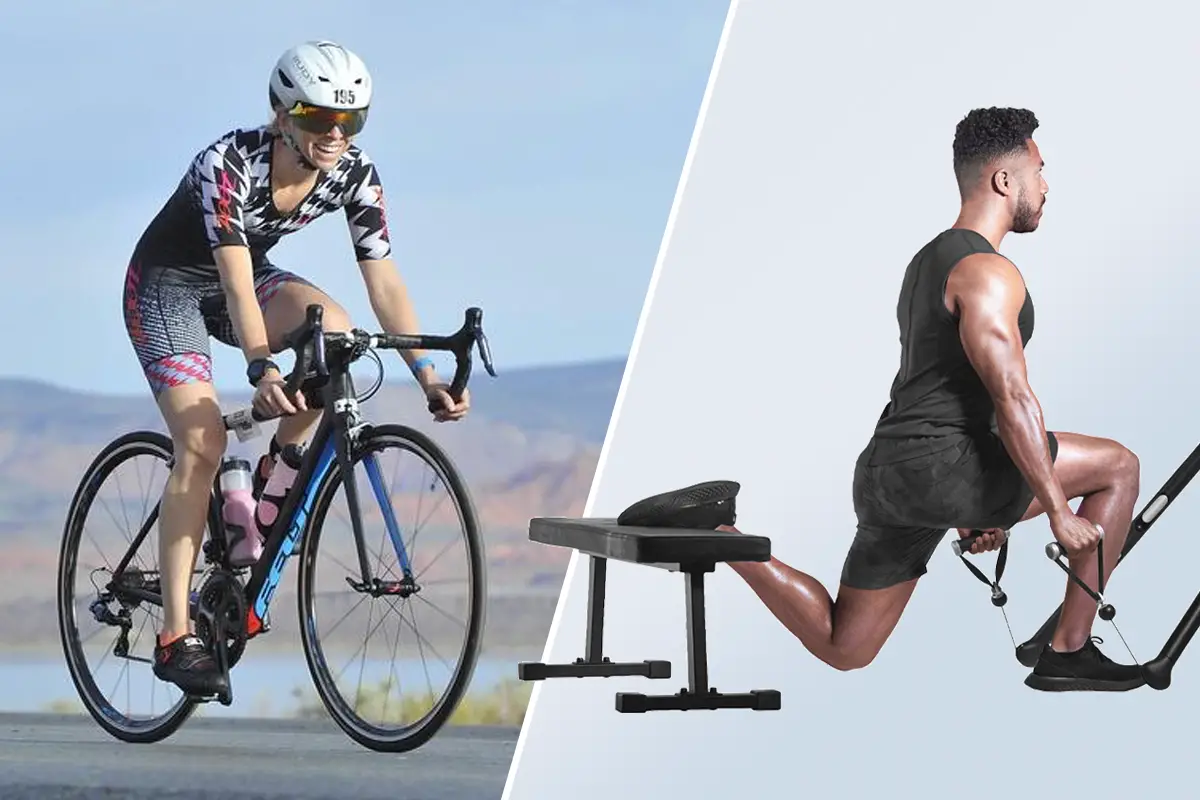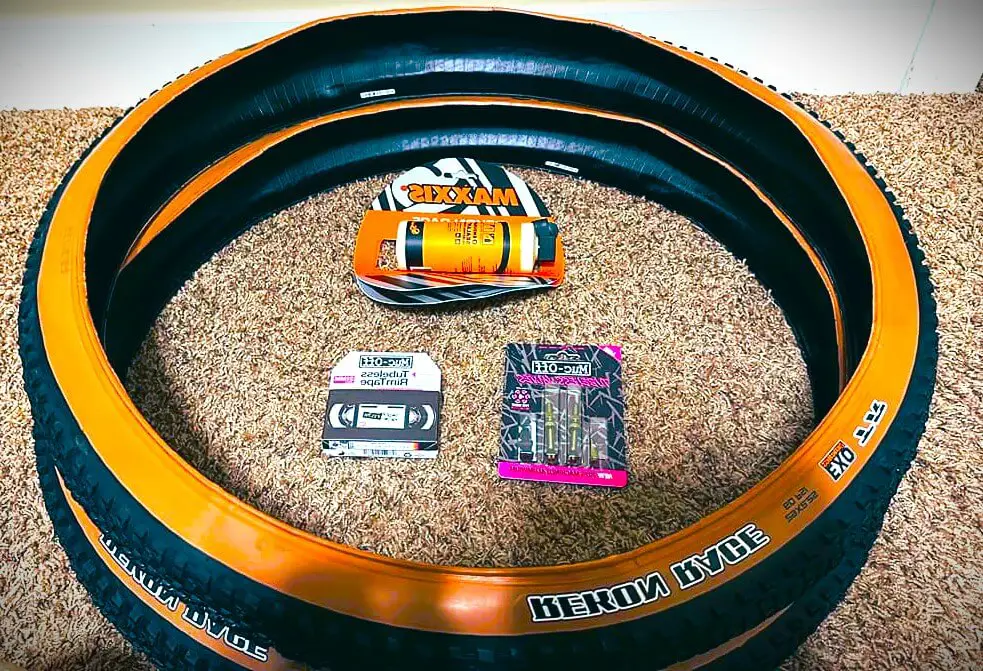Road Bike Sizing by Height: Find Your Perfect Fit!

As an affiliate, we may earn from qualifying purchases. We get commissions for purchases made through links on this website. You can read more on our Affiliate Disclaimer here.
Road bike sizing generally correlates with rider height to ensure a comfortable fit. For example, someone 5’7″ to 5’9″ might ride a 54-55 cm bike.
Selecting the right road bike size is essential for comfort and performance. A bike that fits well will not only improve your riding experience but also enhance efficiency and reduce the risk of injury. To determine the correct size, you must consider your height and inseam measurements.
Manufacturers typically offer size charts correlating these measurements to their bike sizes, which range from extra small to extra large or in centimeters for road bikes.
Ensuring the right fit involves more than just your height; it includes assessing the bike’s geometry and adjusting components such as the saddle height and handlebar reach for optimal positioning.
Consulting a professional bike fitting expert can help tailor the bike to your specific dimensions, leading to a more enjoyable and effective ride.
Introduction To Road Bike Sizing
Road bike sizing is critical for comfort and performance. A well-fitted bike means more fun, less pain, and better rides. Whether a cycling enthusiast or a professional racer, everyone needs the right fit. Here’s a dive into how your height determines the bike size you should aim for.
The Importance Of Proper Bike Fit
A bike that fits well makes all the difference. It reduces injury risks and increases efficiency. Think of it as your cycling shoe; the right size gives the best support.
- Comfort is crucial for those long rides.
- Power and endurance come from a bike sized just for you.
- Control and safety are better with a proper fit.
An Overview Of Road Bike Geometry
Road bikes come with specific geometry for speed and agility. Key measurements like top tube length, standover height, and seat tube angle define this geometry. Each plays a part in how the bike will fit and feel.
| Measurement | Impact on Fit |
|---|---|
| Top Tube Length | Determines reach to handlebars |
| Standover Height | Ensures comfortable clearance |
| Seat Tube Angle | Influences pedaling position |
Understanding The Relation Between Rider Height And Bike Size
Your height is the starting point to find your bike size. Check out this simple guide:
| Rider Height | Bike Size (cm) |
|---|---|
| 4’10” – 5’1″ | 47-49 cm |
| 5’1″ – 5’3″ | 49-51 cm |
| 5’3″ – 5’5″ | 51-53 cm |
| 5’5″ – 5’7″ | 53-55 cm |
| 5’7″ – 5’9″ | 55-57 cm |
| 5’9″ – 5’11” | 57-59 cm |
| 5’11” – 6’2″ | 59-61 cm |
| 6’2″ – 6’4″ | 61-63 cm |
| 6’4″ and taller | 63-65 cm |
Determining Your Road Bike Size
Finding the perfect road bike size is vital for comfort and performance. Each rider’s body is different. A road bike that fits well will give you a better riding experience. Let’s get into how to determine your precise road bike size.
Measure Your Height And Inseam Correctly
Firstly, you need accurate measurements of your height and inseam. Stand against a wall without shoes and measure from the floor to the top of your head. Then, for the inseam, stand with your legs 6-8 inches apart and measure from the floor to your crotch.
How To Use A Road Bike Size Chart
Once you have your measurements, consult a road bike size chart. Charts often use your height and inseam to suggest a frame size. Find your height on the chart and move across to get a suggested frame size.
| Rider Height | Frame Size (cm) |
|---|---|
| 152cm – 160cm | 49cm – 51cm |
| 160cm – 168cm | 51cm – 53cm |
| 168cm – 175cm | 53cm – 55cm |
The Role Of Test Rides In Confirming Size
Test rides are crucial. They help you feel if the size chart’s suggestion is right. During a test ride, check the reach to the handlebars, and if your legs can pedal comfortably. A good fit feels natural and comfortable.
Adjustments Beyond Height: Fine-tuning Your Road Bike Fit
Finding the right road bike size is more than just matching your height to a chart. Once you have the rough frame size down, fine-tuning your fit is crucial.
The right adjustments can lead to a more comfortable and efficient ride. Let’s take a deep dive into achieving the perfect bike fit beyond height.
The Significance Of Reach And Stack
The distance between the saddle and handlebars, known as ‘reach,’ and the vertical distance from the bottom bracket to the top of the head tube, known as ‘stack,’ are pivotal. They define your bike’s overall fit and comfort. Here’s how these elements come into play:
- A shorter reach might suit riders seeking a more upright position.
- A longer reach favors those looking for an aerodynamic stance.
- Stack height affects how low or high you sit on the bike.
Manipulating reach and stack can alleviate strain on your back and shoulders, creating a more enjoyable riding experience.
Saddle Height And Position: Getting It Right
Proper saddle height and position are essential for pedaling efficiency and comfort. A saddle set too high or too low can cause injuries over time. To dial in your saddle settings:
- Adjust the height so your knee has a slight bend when the pedal is at its lowest point.
- Ensure the saddle is level or slightly tilted.
- Position the saddle fore-and-aft so your knee cap is over the pedal spindle when the cranks are horizontal.
Handlebar Width And Stem Length Considerations
Handlebar width and stem length affect control and comfort on your road bike. Correct measurement can enhance your ride:
- A handlebar width equal to your shoulder width ensures natural alignment.
- Stem length matters for reach and overall bike handling.
Test different stem lengths to find what best suits your riding style.
The Impact Of Frame Material On Bike Size And Comfort
Different frame materials offer various levels of stiffness and compliance. Each material affects the bike’s feel:
- Carbon fiber frames provide comfort with vibration damping.
- Aluminum frames can be stiffer but with a harsher ride.
- Steel offers natural flex but can be heavier.
- Titanium strikes a balance between comfort and weight.
Choose a material that aligns with your comfort needs and riding style.

Credit: www.rei.com
Common Road Bike Sizing Pitfalls And How To Avoid Them
Finding the perfect road bike size is essential for comfort and performance. It’s easy to stumble on sizing hurdles. By recognizing these pitfalls, riders ensure a better cycling experience. Let’s step through common sizing traps and nimbly sidestep them.
Mistakes When Measuring Rider Height And Inseam
Accurate measurements are the foundation of finding your road bike size. Incorrect measurement leads to discomfort and inefficiency.
- Stand against a wall, feet together, to measure your height.
- Place a book between your legs for the inseam. Mark the wall at the book’s top, then measure to the floor.
Double-check these numbers before consulting size charts.
Misinterpreting Bike Sizing Charts
Bike sizing charts can be confusing. Frames are measured in centimeters while height in inches can lead to errors.
| Rider Height | Frame Size (cm) |
|---|---|
| 4’10” – 5’2″ | 46 – 48 cm |
| 5’2″ – 5’6″ | 49 – 52 cm |
| 5’6″ – 5’10” | 53 – 56 cm |
Match your measurements with the right chart values. A size too small or large will affect your ride negatively.
Ignoring The Importance Of Test Rides
Never skip a test ride. It’s the best way to feel if the bike suits you. During a test ride, you understand the bike’s handling, comfort, and size.
Pay attention to how your body feels. Your arms, legs, and back will tell if the size is right.
Neglecting The Need For Post-purchase Adjustments
Even the right size bike needs tweaks. After buying, fine-tune the fit.
- Adjust the saddle height and position for optimal leg extension.
- Tweak the handlebar height and reach for comfort.
- Modify the pedal and cleat alignment to prevent strain.
Visit a bike shop for a professional fit if you’re unsure.
Advanced Sizing Considerations For Competitive Cyclists
Getting the perfect road bike size is crucial for competitive cyclists. It’s more than just matching height to a chart. Advanced sizing looks at individual proportions, riding style, and performance needs. Serious racers need to consider how the fit of their bike could affect speed, power, and endurance. This section dives deep into these advanced considerations. Let’s focus on how to maximize the bike’s potential.
Custom Bike Frames For Optimal Performance
Custom frames are the key to a tailored ride. They match your unique body measurements. This ensures every pedal stroke is as efficient as possible.
- Reach and Stack: Tailored for your torso and arm length.
- Seat Tube Angle: Optimized for your hip and knee alignment.
- Top Tube Length: Adjusted for comfort and power on long rides.
The Latest Trends In Road Bike Sizing For Racing
Today’s racers prefer bikes that are both lightweight and strong. Manufacturers focus on compact frames with shorter top tubes. This encourages a more aerodynamic riding position. Sizing trends also indicate a shift towards integrated components for reduced drag.
Balancing Aerodynamics And Comfort In Sizing Choices
Choosing the right size is a balancing act. Aerodynamics are important for speed. Yet, comfort is key to avoid fatigue. The optimal size allows for a range streamlined and upright postures. It prevents injuries and boosts long-term performance. Riders should test multiple positions to find their ideal fit.

Credit: www.sixthreezero.com
Conclusion: Embracing Your Individual Fit
Finding the right road bike size is crucial for comfort and performance. Body proportions vary, so a bike fitting matters just as much as your height. Let’s wrap up with key takeaways, the importance of professional fitting, and the benefits of the ideal bike size. Keep safety and pleasure at the forefront of your cycling adventures.
Summary Of Key Takeaways
- Measure your height and inseam to start the sizing process.
- Reference size charts, but don’t rely on them alone.
- Understand that arm and torso lengths impact bike size too.
- Test rides are invaluable for feeling out the right fit.
Encouragement To Seek Professional Fitting Services
A professional bike fit can refine your cycling experience. Experts analyze your riding style and physical dimensions. They tailor your bike to match your body’s needs. This customization can prevent injuries and boost your riding efficiency. It’s a worthy investment for any serious cyclist.
The Long-term Benefits Of Riding The Perfectly Sized Road Bike
Your ideal road bike transforms every ride. Better control, improved comfort, and reduced fatigue are just the start. Long-term, a well-sized bike promotes consistent cycling success. It ensures each journey is a joy and keeps you eager for more miles on the road.

Credit: www.rei.com
Frequently Asked Questions On Road Bike Sizing By Height
What Size Road Bike Should I Get For My Height?
To find the right road bike size for your height, refer to the manufacturer’s size chart, usually aligning with your height. Commonly, a rider between 5’3” and 5’7” might choose a 54cm bike, while someone 5’8″ to 5’11” could fit a 56cm frame.
Always test ride for comfort.
What Height Does A 55cm Bike Fit?
A 55cm bike generally fits riders who are between 5’9” and 6’0” tall. Always confirm with a sizing chart or professional fitting for the best match.
Is 26 Inch Bike Good For What Height?
A 26-inch bike typically suits riders with a height range of 5′ to 5’5″. Ideal fit may vary based on leg length and bike geometry.
How Tall Should You Be For A 27-Inch Bike?
For a 27-inch bike, ideally, your inseam should be at least 31 inches, suitable for riders 5’10” to 6’3″ tall.
Conclusion
Finding the perfect road bike size is crucial for comfort and performance. Use your height as a starting guide and test different models.
Remember, the right fit enhances your riding experience and prevents injuries. Get sized, get set, and pedal your way to cycling success!

Steven is a professional cyclist and his passion is cycling. He has been cycling for the last 6 years and he loves using bikes while outing as well. Based on his experiences with the different types of bikes; he is sharing his opinions about various bikes so that a beginner can start right away. Find him on Twitter @thecyclistguy Happy Biking.




